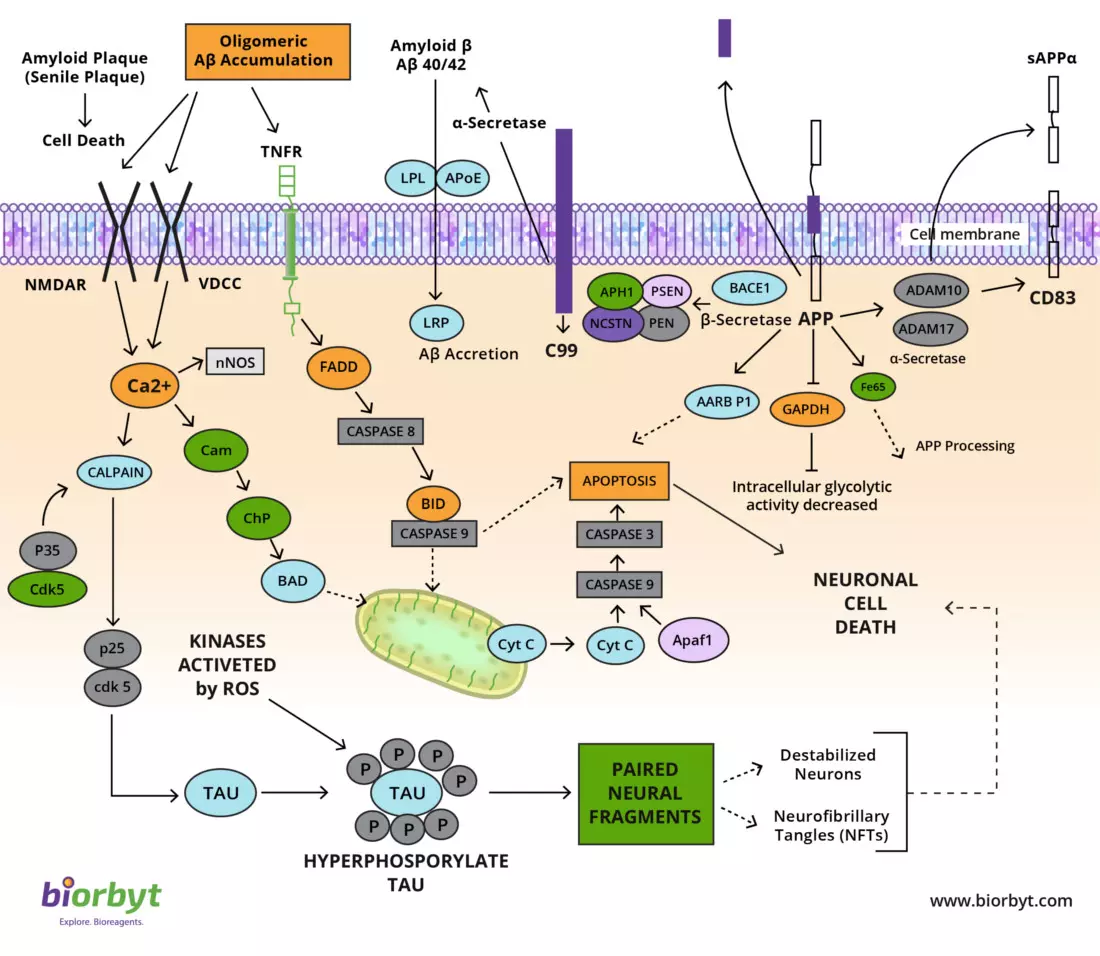You have no items in your shopping cart.
Molecular Mechanisms of Alzheimer's Disease
Alzheimer\'s disease (AD) is a debilitating neurodegenerative disorder. It is characterised by plaques made up of deposits between brain cells. These plaques are composed of a molecule called amyloid which leads to the formation of tangled twisted fibres made from tau, which is found within brain cells. This causes the death of brain cells, which is thought to bring about the symptoms of memory loss and dementia.

The processing of the integral membrane protein APP (Amyloid Precursor Protein) is fundamental to the progression of this disease. APP is initially cleaved by α-secretase to generate sAPP and a C83 carboxy-terminal fragment. The presence of sAPP is associated with normal synaptic signalling and results in synaptic plasticity, learning and memory, emotional behaviours, and neuronal survival. In the disease state, APP is cleaved sequentially by β-secretase and γ-secretase to release an extracellular fragment called A40-42. Aggregation of this fragment results in A40-42 oligomerization and plaque formation causing neurotoxicity, resulting in blocked ion channels, disruption of calcium homeostasis, mitochondrial oxidative stress, impaired energy metabolism, abnormal glucose regulation, and ultimately neuronal cell death. CDK5 and other kinases such as GSK3, PKC, PKA, and Erk2 are also activated by reactive oxygen species generated in the cell. This leads to hyperphosphorylation of Tau resulting in the dissociation of Tau from the microtubule, leading to microtubule destabilization and oligomerization of the Tau protein within the cell. Neurofibrillary tangles form because of Tau oligomerization and lead to apoptosis of the neuron.
Bibliography
Gratuze M, et al. Mutual Relationship between Tau and Central Insulin Signalling: Consequences for AD and Tauopathies? Neuroendocrinology. 2018;107(2):181-195. doi: 10.1159/000487641. Epub 2018 Feb 13.
Pereira CD, et al. ABC Transporters Are Key Players in Alzheimer\'s Disease. J Alzheimers Dis. 2018;61(2):463485. doi: 10.3233/JAD-170639.
Pedros I, et al. Molecular links between early energy metabolism alterations and Alzheimer\'s disease. Front Biosci (Landmark Ed). 2016 Jan 1;21:8-19. Review.
